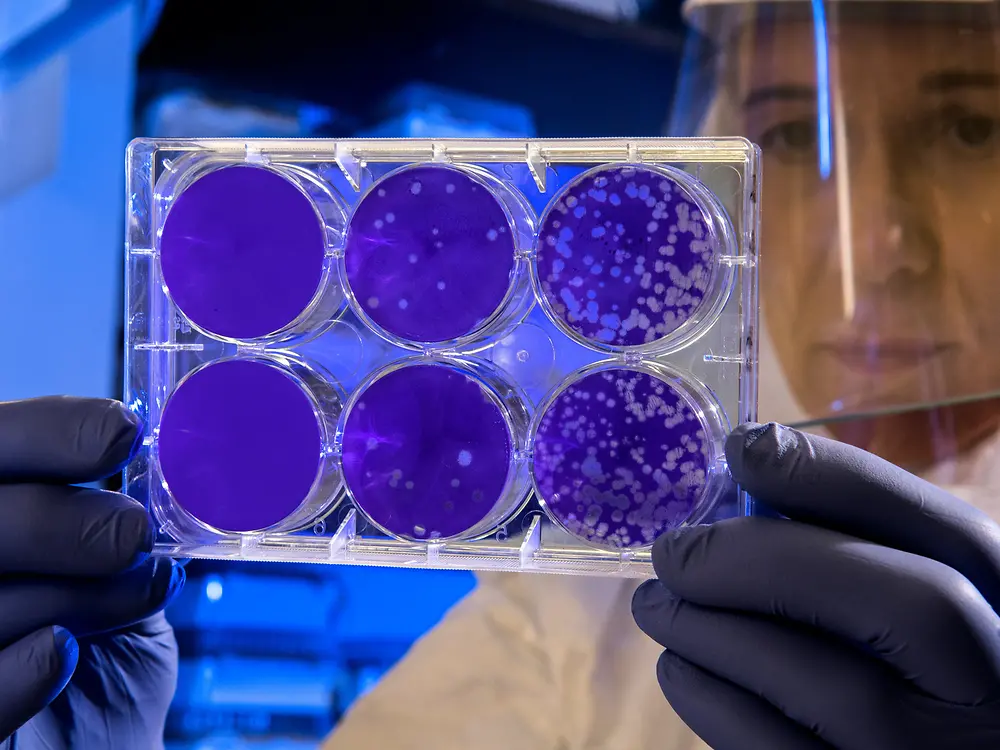At Henkel Tech Ventures, we are always on the lookout for unique ideas that would fundamentally improve our lives and coexistence with one another. We recently found a technology which does just that. Today we'd like to introduce you to antibacterial and antiviral coatings, which we strongly believe will be extremely beneficial for all of us and our future.

AN ANSWER TO COVID-19 –
ANTIBACTERIAL AND ANTIVIRAL COATINGS
The coronavirus pandemic has permanently changed our way of life in public spaces. We have become much more aware of our surroundings. Armed with disinfectant sprays, we face the battle at every door handle and public transport ride. And it's not just since Covid-19 that we've known about surfaces being hotspots for germs. Henkel Tech Ventures is therefore looking for ways to minimize these kinds of risks. Recently, in part thanks to the coronavirus, a promising technology has made its way onto the agenda: antiviral and antibacterial coatings.
WHAT IS AN ANTIVIRAL OR ANTIBACTERIAL COATING?
In a nutshell, it’s a special coating that kills bacteria and inactivates viruses. Imagine some tiny bacteria just floating through the air and then landing on an antibacterial door handle. As soon as it comes into contact with an antiviral and antibacterial coating, the bacteria are no longer harmful in some finite time. We can essentially disinfect the door handle or at least minimize its infectious load.
HOW DO ANTIVIRAL OR ANTIBACTERIAL COATINGS WORK?
Bacteria are living organisms. They have cell walls, metabolisms and can reproduce on their own. If the cell wall of the bacteria is destroyed, the bacteria dies. Disinfectant gels or sprays work primarily using this principle. Unfortunately, we can't disinfect door handles at train stations every few seconds.
Antibacterial and antiviral coatings tackle the issue with a different technique – by releasing disinfecting chemicals that neutralize the bacteria or virus. Coatings containing silver are traditionally known to have this effect and although silver can also work against viruses, it is generally not very effective. The silver method also comes with a catch: Metal ions release uncontrollably into the environment which means that along with killing harmful bacteria, it can also wipe out bacteria beneficial to us. To avoid this indiscriminate release of toxic silver, we are looking for alternative, safer coating systems.
WHAT ARE THE ANTIVIRAL AND ANTIBACTERIAL COATING TRENDS?
We are currently exploring a revolutionary new method, together with our partners in the USA, which involves an antiviral coating that doesn’t release metal ions. Instead, it generates an active oxidative disinfectant in a self-regenerating process. The disinfecting only occurs when bacteria or a virus lands on the coated surface. It’s triggered by water and air as well as the chemistry of the infective agent. Once the job is done, the coating returns to its normal state and remains effective as long as the surface exists.
WHERE DO WE CONSIDER IMPLEMENTING THIS NEW TECHNOLOGY IN THE FUTURE?
This regenerative disinfecting chemistry can be readily incorporated into our existing formulations for coatings, adhesives and building materials, without compromising the functionality of the core chemistry. In terms of cost and time, it would save many sectors greatly. Take an aircraft, for example, where every plastic surface in the passenger area has to regularly be disinfected – these days that means after each and every flight. Of course, antibacterial and antiviral coatings aren’t a cure all for a pandemic, but wherever it is unavoidable that a large number of people come into contact with the same surface, this technology has great potential to minimize the risk of infections and make our coexistence safer.
